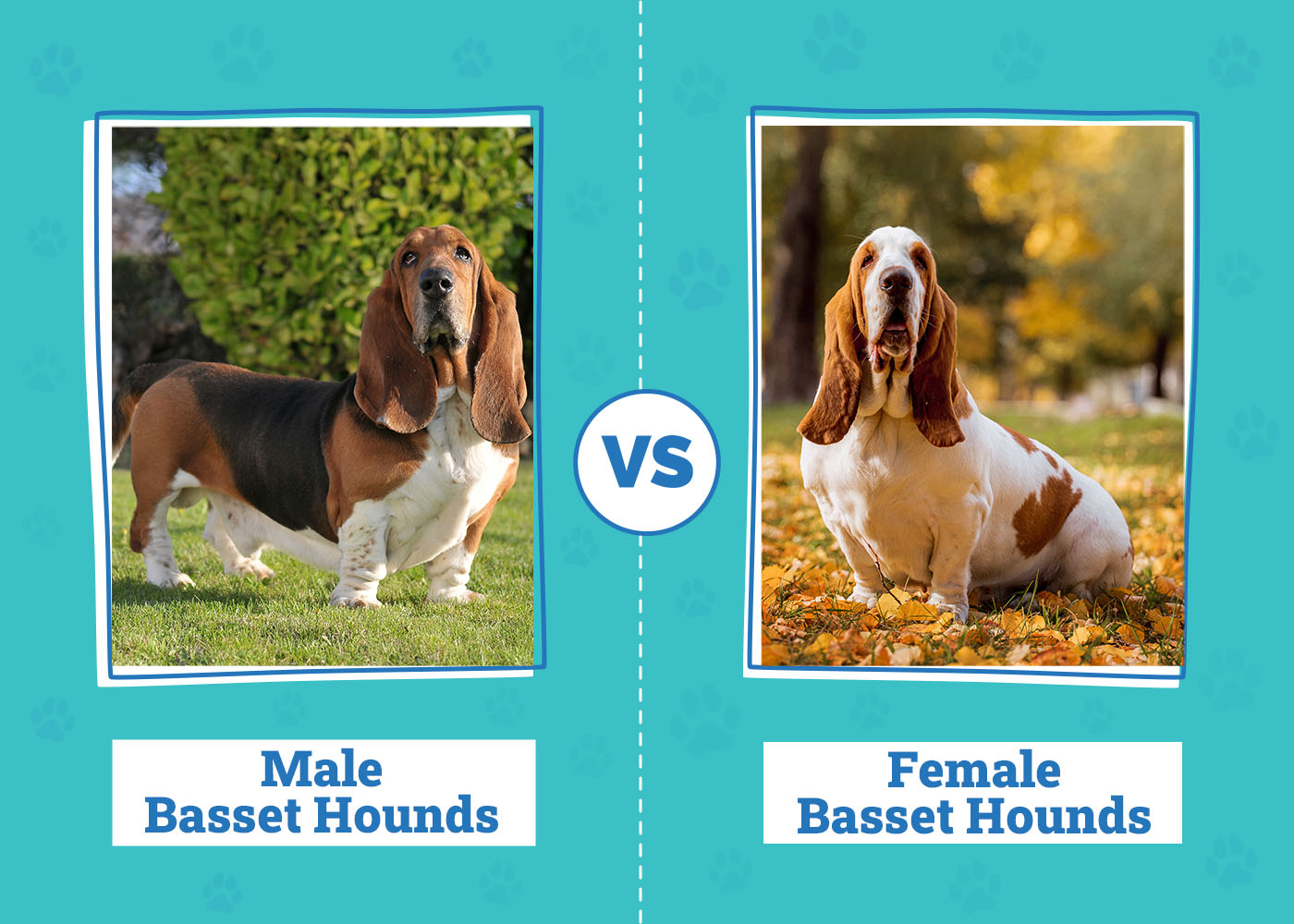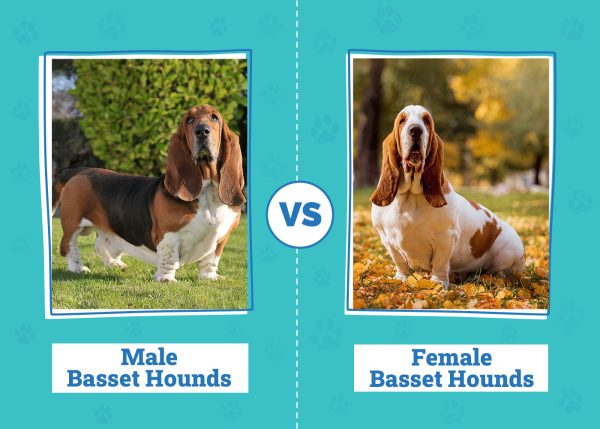The pros and cons of male and female animals has been hotly debated since, well, probably the beginning of pet ownership. There are all sorts of opinions out there that get mixed up with facts, and opinions and facts both tend to overshadow the individual personality of every animal. Basset hounds are fantastic dogs, but even they aren’t immune to the discussions surrounding male versus female dogs. And really, that’s alright! It’s important to find the perfect dog to suit your home, based not only on personalities, but also your lifestyle, living situation, and family members. Here are the differences between male and female Basset hounds to help you pick the perfect pup!

Visual Differences
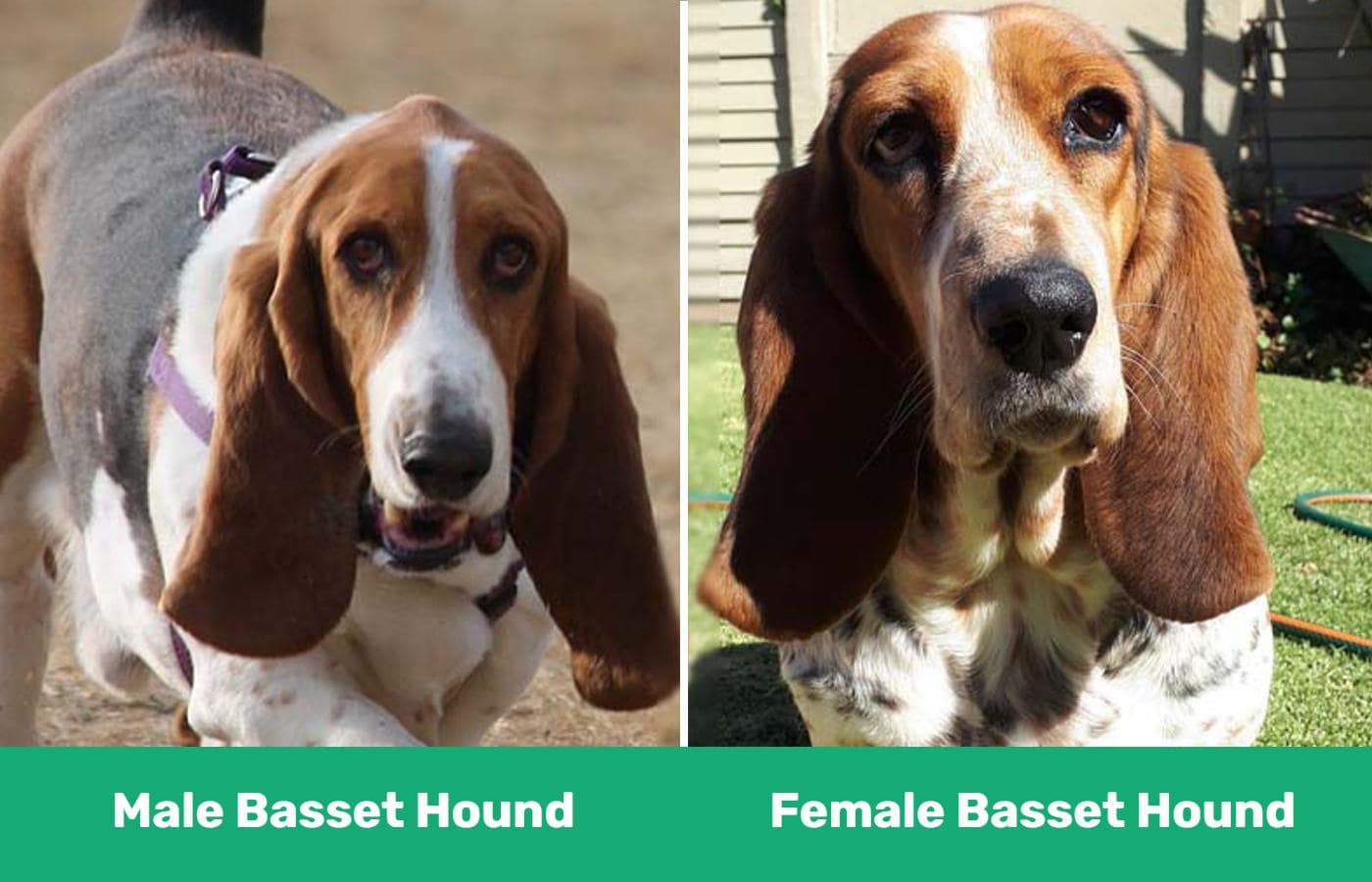
At a Glance
- Average height (adult): 12 – 15 inches
- Average weight (adult): 45 – 65 pounds
- Average height (adult): 11 – 13 inches
- Average weight (adult): 40 – 55 pounds
Basset Hound 101
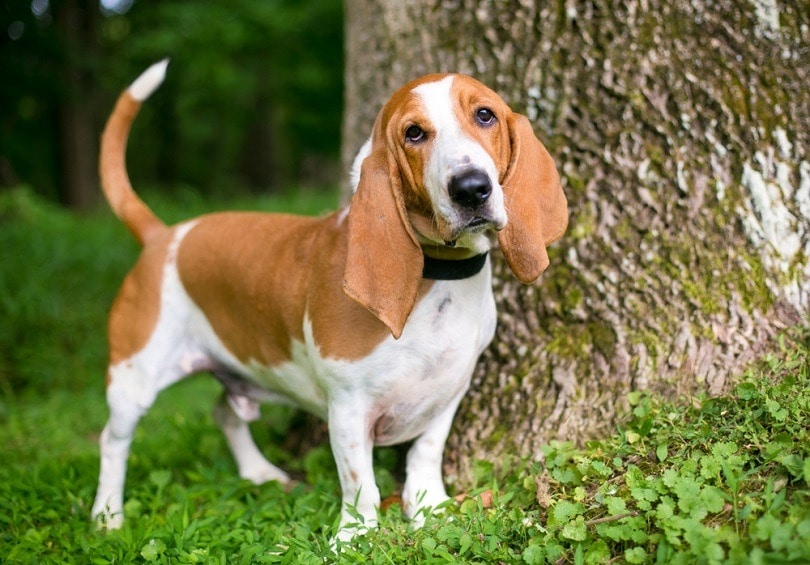
Overall, the Basset hound is known for its short, angular legs, droopy face, and long, velvety ears. The breed is known for being patient and laid-back, but also charming and humorous. This breed responds well to positive reinforcement and is often highly food motivated, which can be a blessing and a curse. Food-motivated dogs are easier to incentivize than those that aren’t as interested in food, but this breed is prone to obesity, so treats should be chosen carefully and administered in moderation. While some balanced training approaches are appropriate for Basset hounds, it’s important to mask any frustration you have during the training session. These dogs are sensitive to our emotions, and if they sense frustration or defeat during a training session, it can set your training back.
Male Basset Hound Overview
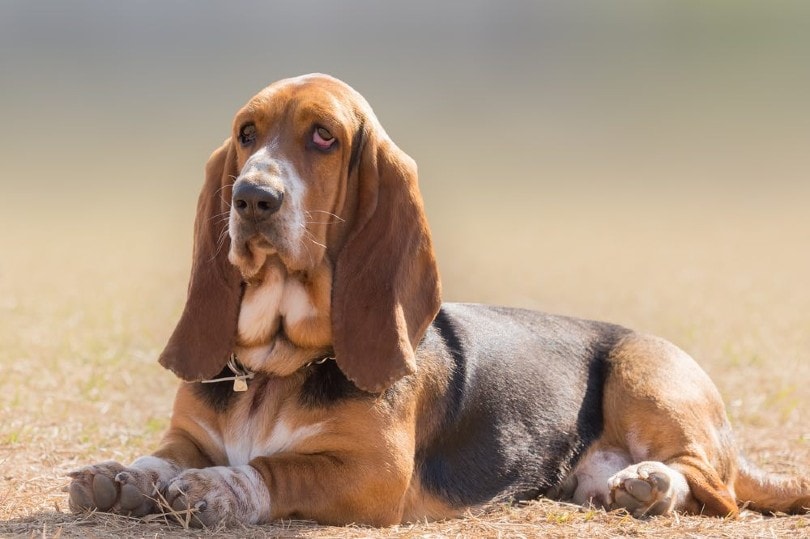
Personality / Character
Males are clingier as pups and more prone to separation anxiety behaviors. Males seem to like to be in the middle of the action. They have less independent personalities than females and will often inject themselves into the middle of the more active parts of the home. A benefit of this behavior is that it can often be easier to stimulate a male to play than a female, making it easier to keep him active and healthy. Don’t take their more loving personality to mean they are less dominant, though. Males are the more dominant sex, especially if they feel challenged or irritated. Studies have shown that male dogs, in general, are more likely to bite than females, and of those dogs, intact males are more likely to bite than neutered males.
Training
Male Basset hounds can be a challenge to train simply because of their inability to focus and their playful personalities. Turning training sessions into games that your dog enjoys can be a fantastic way to train males, especially when they are still in the puppy stage. Fun, interactive training sessions will hold a male’s attention far longer than a boring or grueling training session.

Health & Care
Basset hounds are prone to ear infections due to their oversized, long ears. This may be more prominent in males since they are overall larger, so often have larger ears than females. Males are more likely to develop OCD and separation anxiety, both of which may require medical intervention to keep under control for the safety and wellbeing of the dog. Males seem to be equally likely as females to develop dilated cardiomyopathy, hip and knee dysplasia, patellar luxation, glaucoma, hypothyroidism, and bleeding disorders.

Breeding
Before breeding a male Basset hound, he should be proven and titled, showing he is an exemplary specimen of the breed in either appearance or performance. The Basset Hound Club of America strongly recommends breeding dogs be tested to determine if they are carriers for thrombopathia, glaucoma, and mucopolysaccharidosis. Joint clearance through an established registry, like OFA and PennHip, is also recommended.
- Like to be in the middle of everything
- Playful and active
- Loving personality
- Can often be trained with games
- More likely to develop separation anxiety and OCD
- Can develop dominant tendencies
- May be difficult to train

Female Basset Hound Overview

Personality / Character
When they are puppies, females are often considered sassier and bossier than the males, who tend to be more loving and laid-back while still remaining playful. As they age, females tend to balance out once they reach maturity. This means that they are more agreeable and trainable than when young, but they still maintain a sense of independence. They are known to be equally content spending time alone or interacting with people or other animals. Females may be more protective than males, which is often attributed to the maternal instinct to protect their young. Displays of dominance or protectiveness may peak during a heat cycle, pregnancy, or post-partum period.
Training
Training a female Basset hound can be a challenge, especially early on when you are attempting to establish a routine. Their independent nature means that females are prone to disobeying or ignoring their handler when given commands. Females have a great ability to focus than males do, though, which does provide a training benefit. If you can get your female’s attention, retaining that attention shouldn’t be particularly difficult.
Health & Care
Females are equally likely to develop joint dysplasia, heart problems, and clotting disorders. They may be less likely to develop ear infections but are still at risk. Special considerations to the health of female Basset hounds are the same as with any other breed. Females are at risk for mammary cancer, ovarian cancer, and pyometra, all of which can be deadly, with pyometra being a medical emergency. Spaying can eliminate or reduce the risk of reproductive-related disorders.
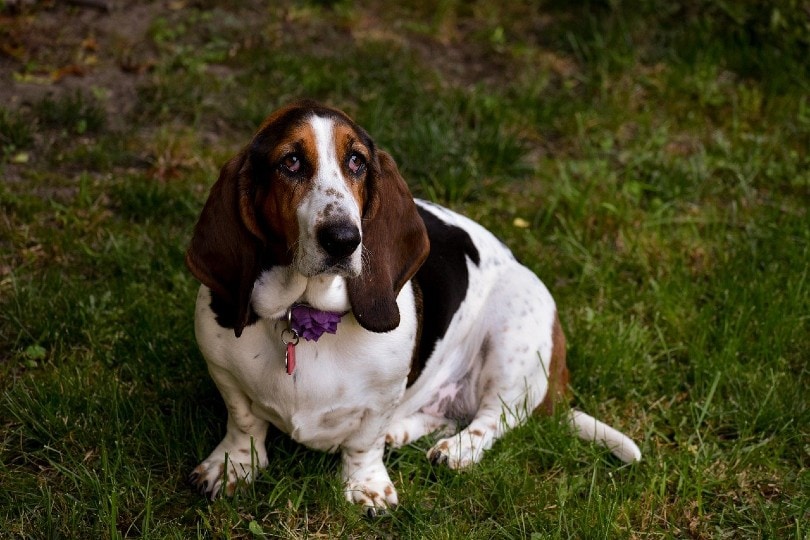
Breeding
If breeding a female Basset hound, the same genetic tests should be performed. In some instances, if frozen semen from a deceased dog is being used for breeding and these tests can’t be performed on the male, the female should have these tests done to reduce the risk of the litter developing these issues. Another concern when breeding a female Basset hound is the potential for needing a c-section to safely deliver the pups. Short, stocky breeds are at an increased risk of needing emergency c-sections. Being overweight only increases this risk.
- Agreeable and trainable when young
- Protective
- Strong ability to focus on tasks and training
- Independent and comfortable being alone
- May be difficult to train once mature
- High level of independence may not be for everyone
- At increased risk of reproductive problems
Which Gender is Right For You?
None of these are hard and fast rules when it comes to male versus female Basset hounds. However, these are generalized observations of the breed and of male and female dogs as a whole. Early socialization and proper training can often bring out different parts of a dog, and things like spaying/neuter can create hormonal changes that may affect the way your dog behaves.
Basset hounds are a loving dog breed and are highly prized for their patience and love of people. Whether you decide to get a male or a female Basset hound, be prepared for the training needs and overall personality of the breed. With proper early socialization and training, you won’t be disappointed to bring a Basset hound into your home!
See also:
- 10 Basset Hound Colors & Patterns (With Pictures)
- Miniature Basset Houndog Breed Info: Pictures, Care Guide, Temperament & Traits
Featured Image Credit: Images by Dr. Alan Lipkin, Shutterstock (top); Ewa Studio, Shutterstock (bottom)

